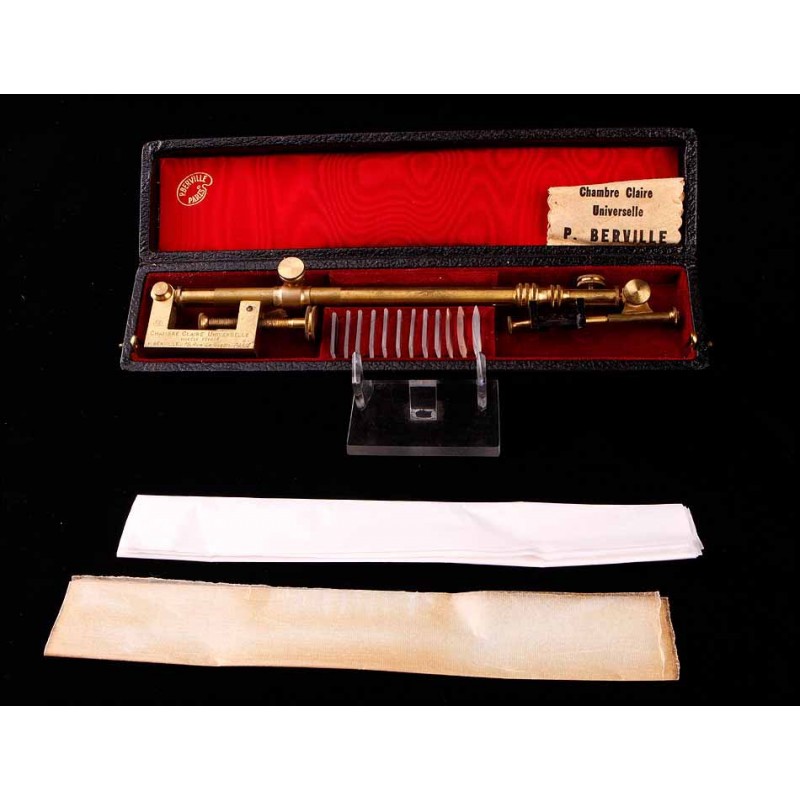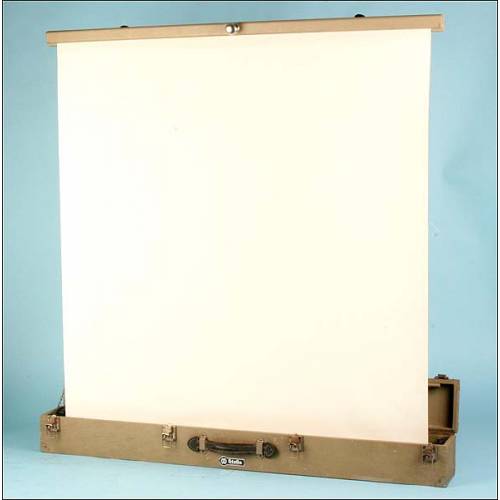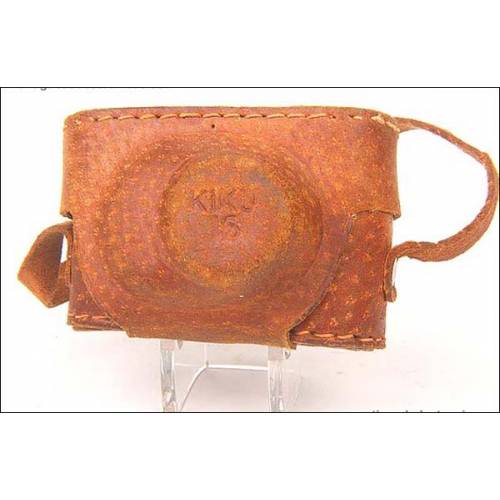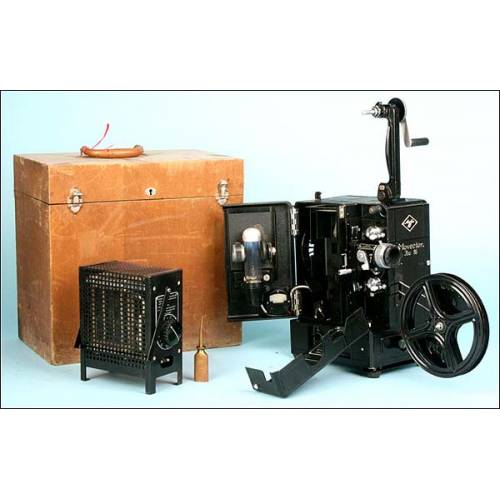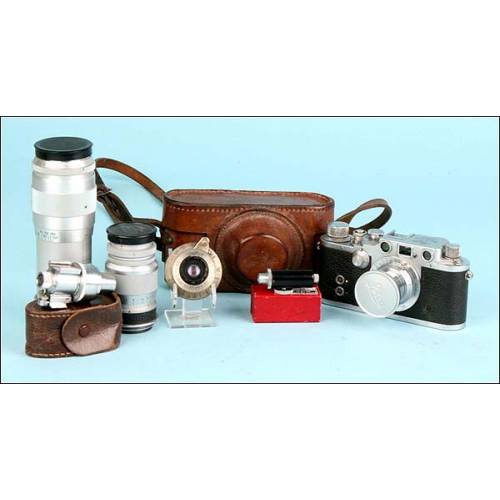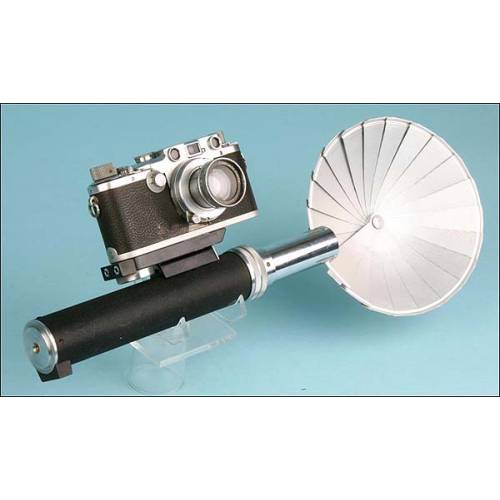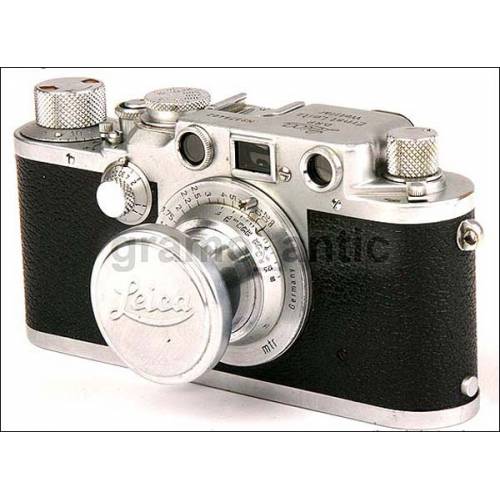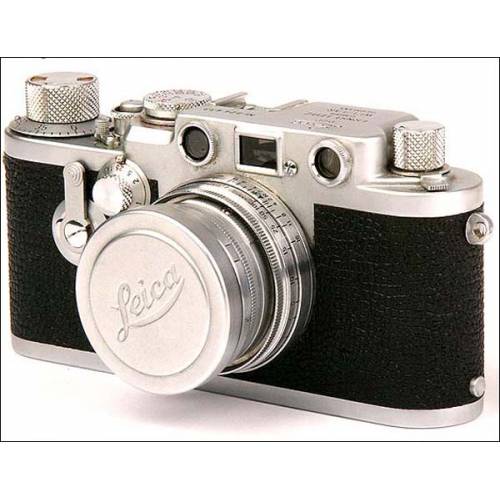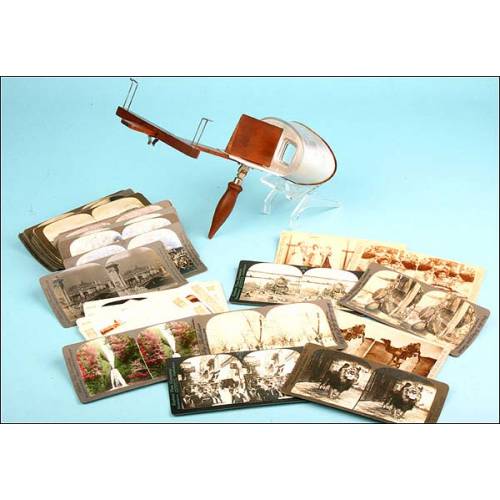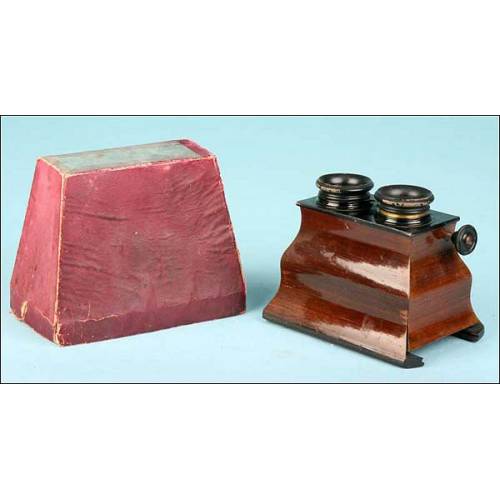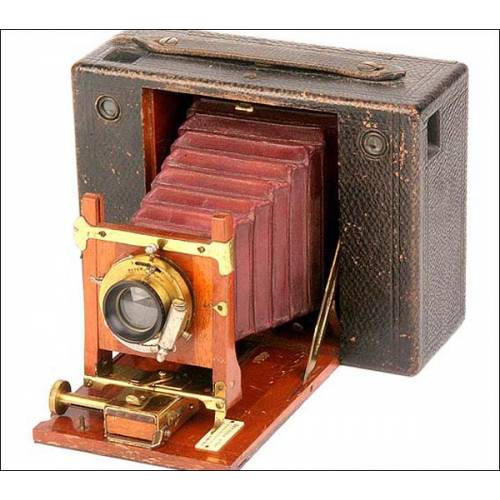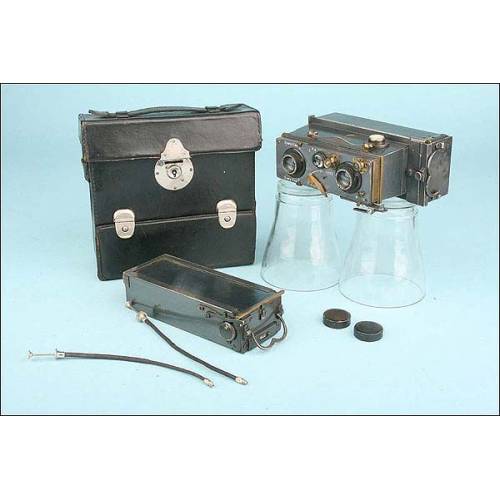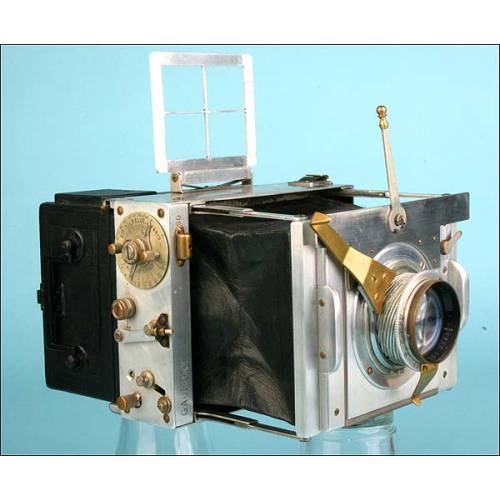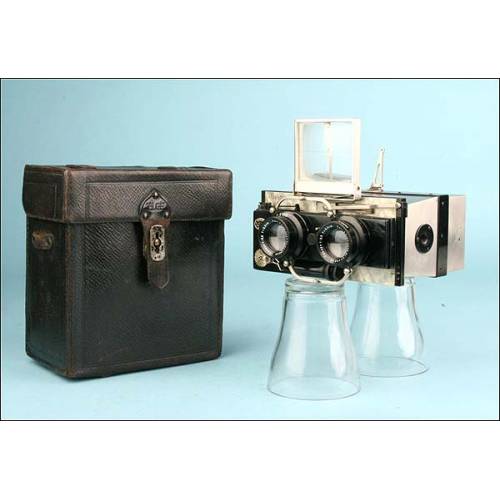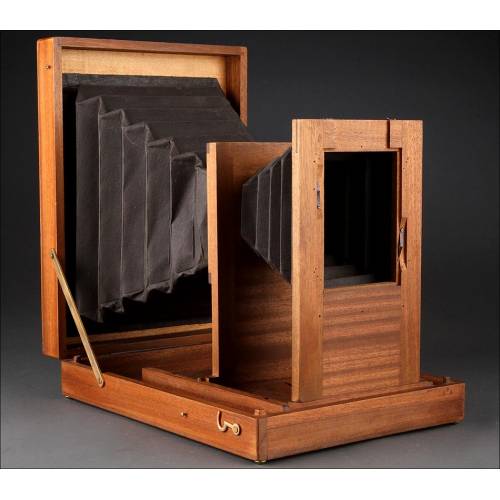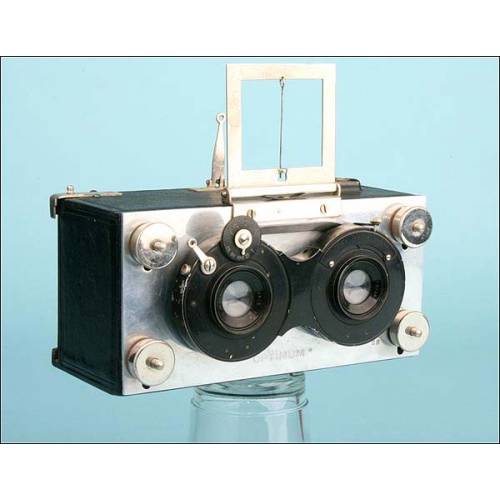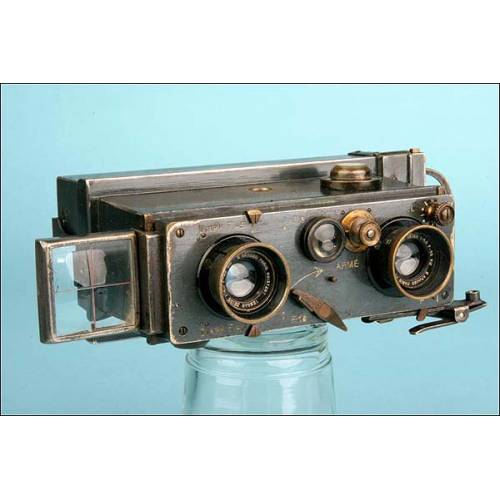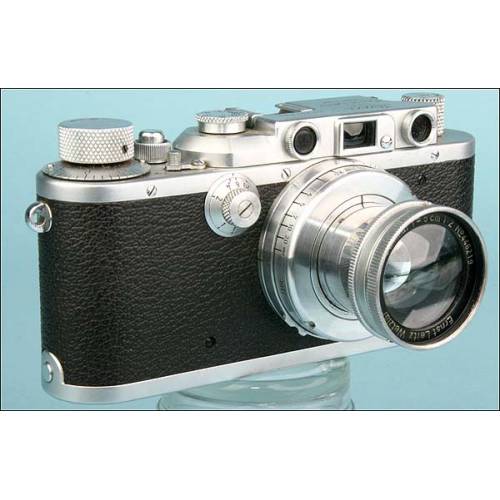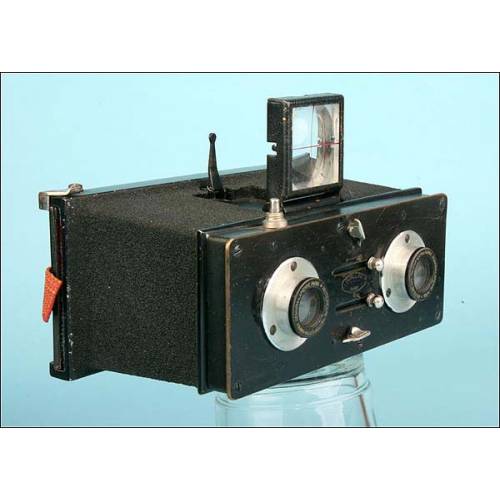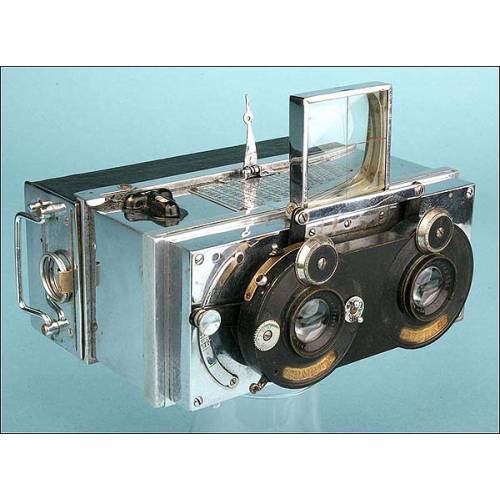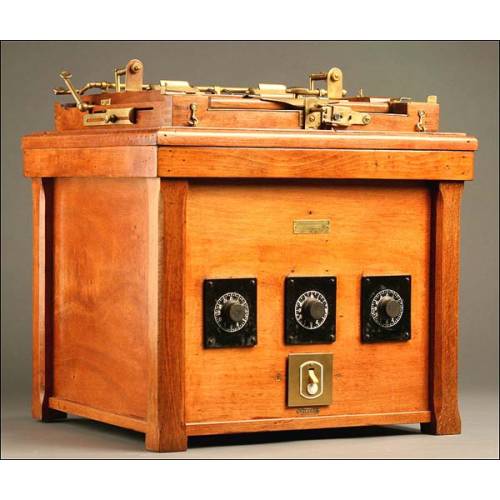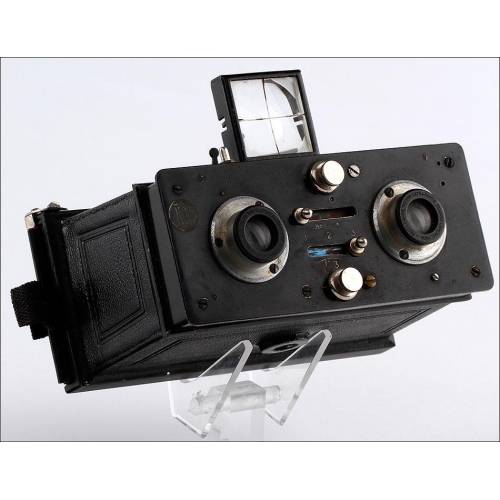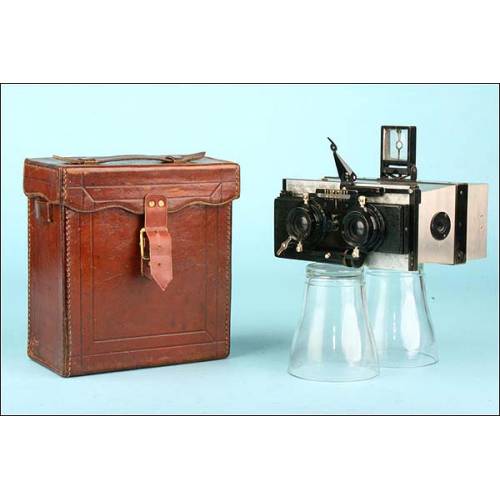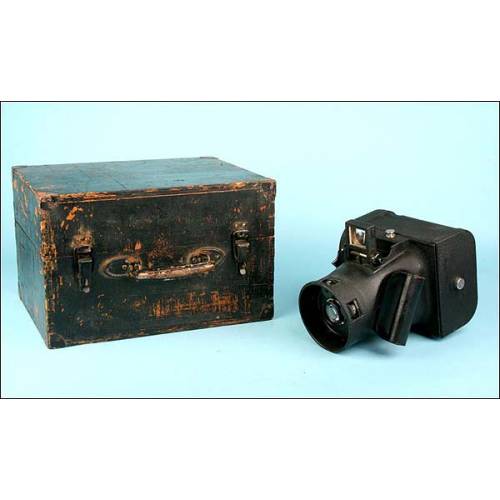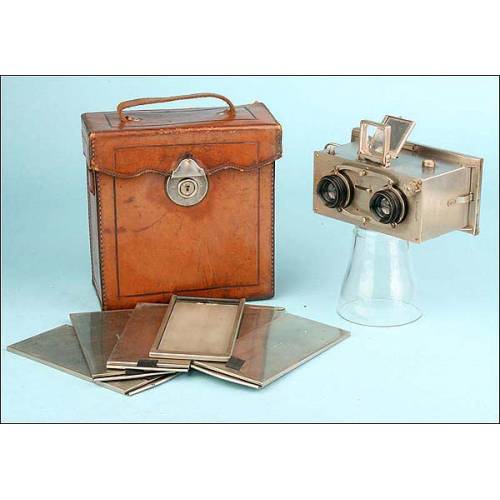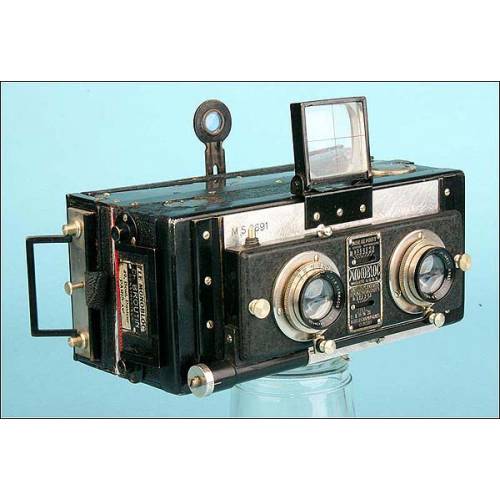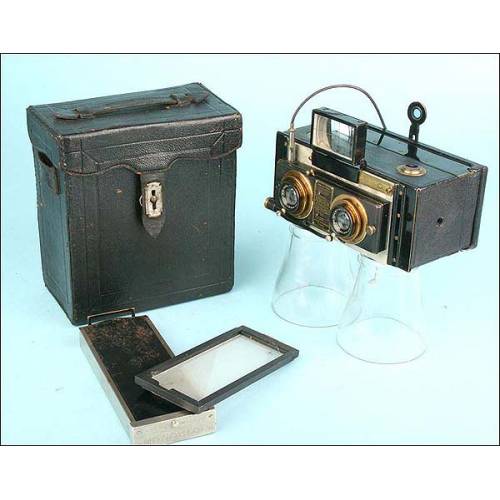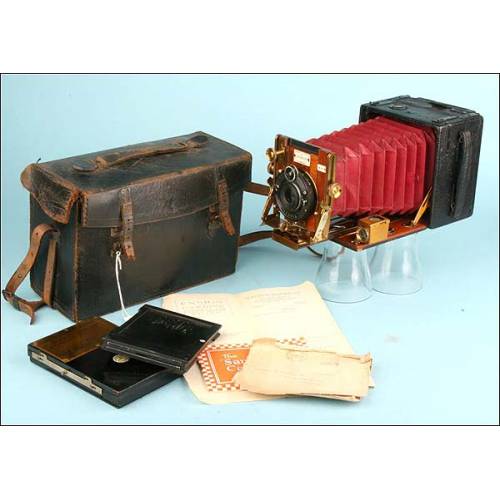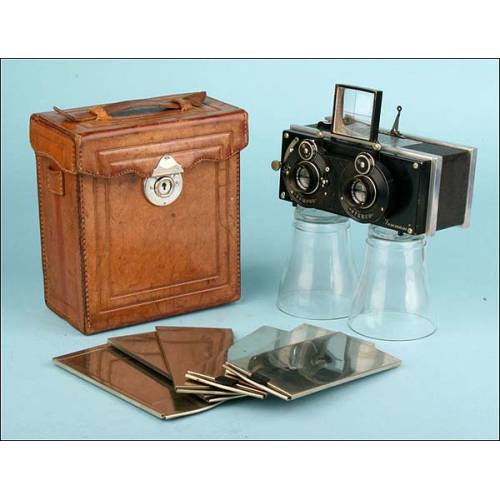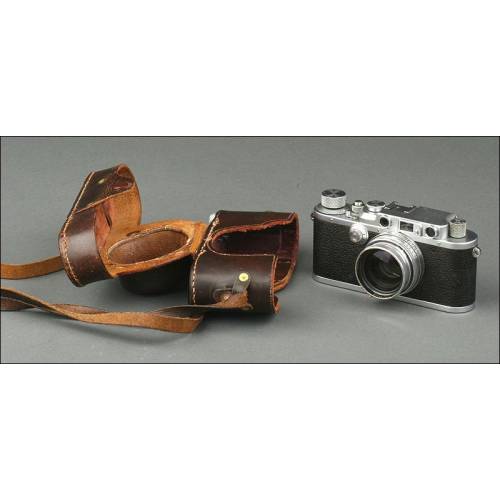B-914
Complete antique camera lucida. 1900
Antique gilt brass camera lucida made by P. Berville. With all lenses. In working order.
Sold!
Rare and antique golden-brass camera lucida signed by P. Berville and in its original storing case. This drawing instrument is complete and remains in quite good condition: it is dated around the year 1900 and was made in Paris. This camera lucida is quite remarkable as it is made of golden brass. The brass is quite well preserved and shows no relevant signs of wear; on the contrary, its even and softly matt surface shows off a great beauty. The camera lucida comes in a sturdy case outside covered by black leather. Inside it is covered of a wonderful bright red moiré lining in excellent condition. The golden brass instrument, composed of two connected pieces that make up an articulated arm, stands out on the lively red color of the fabric. At the bottom, the arm is connected to a clamp designed to attach the camera lucida to the drawing table; at the top there is a place to put the lenses. The clamp bears the instruments name (CHAMBRE CLAIRE UNIVERSEILLE) and the manufacturers data engraved in the metal. The lens set that comes with the instrument is original and remains complete. As beautiful as interesting, this antique camera lucida in its original storing case is a real museum piece. Measurements (Case): Width: 11 in / 28 cm. Depth: 2.4 in / 6 cm.Camera lucida History The camera lucida was invented in the 19th century. It is a device to reproduce objects from nature while keeping the exact proportions in the drawing. It was described by Johannes Kepler in his work Dioptrica (1611), but there is no evidence of any of his contemporaries constructing a working camera lucida. The first one was designed and made by William H. Wollaston in 1807; Wollaston also gave it its definite name (camera lucida, meaning light room as a contraposition of camera obscura, dark room). During the 19th and early-20th century, cameras lucidas were quite popular. In 1833, the photographic pioneer William Fox Talbot tried to reproduce objects from nature using a camera lucida, but he was quite disappointed and decided to seek a means to "cause these natural images to imprint themselves durably". Today these devices are still produced, though they are not widely used.

